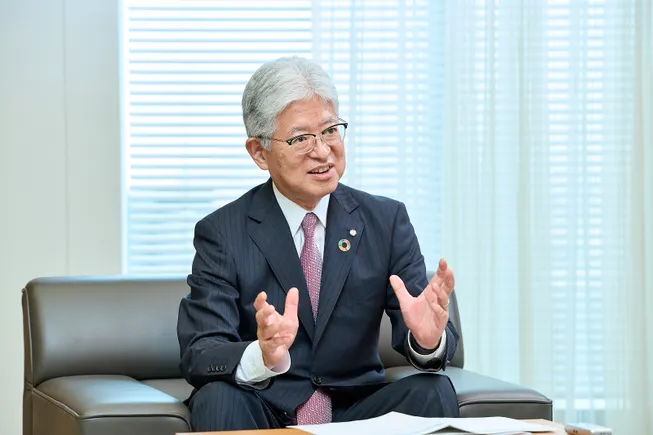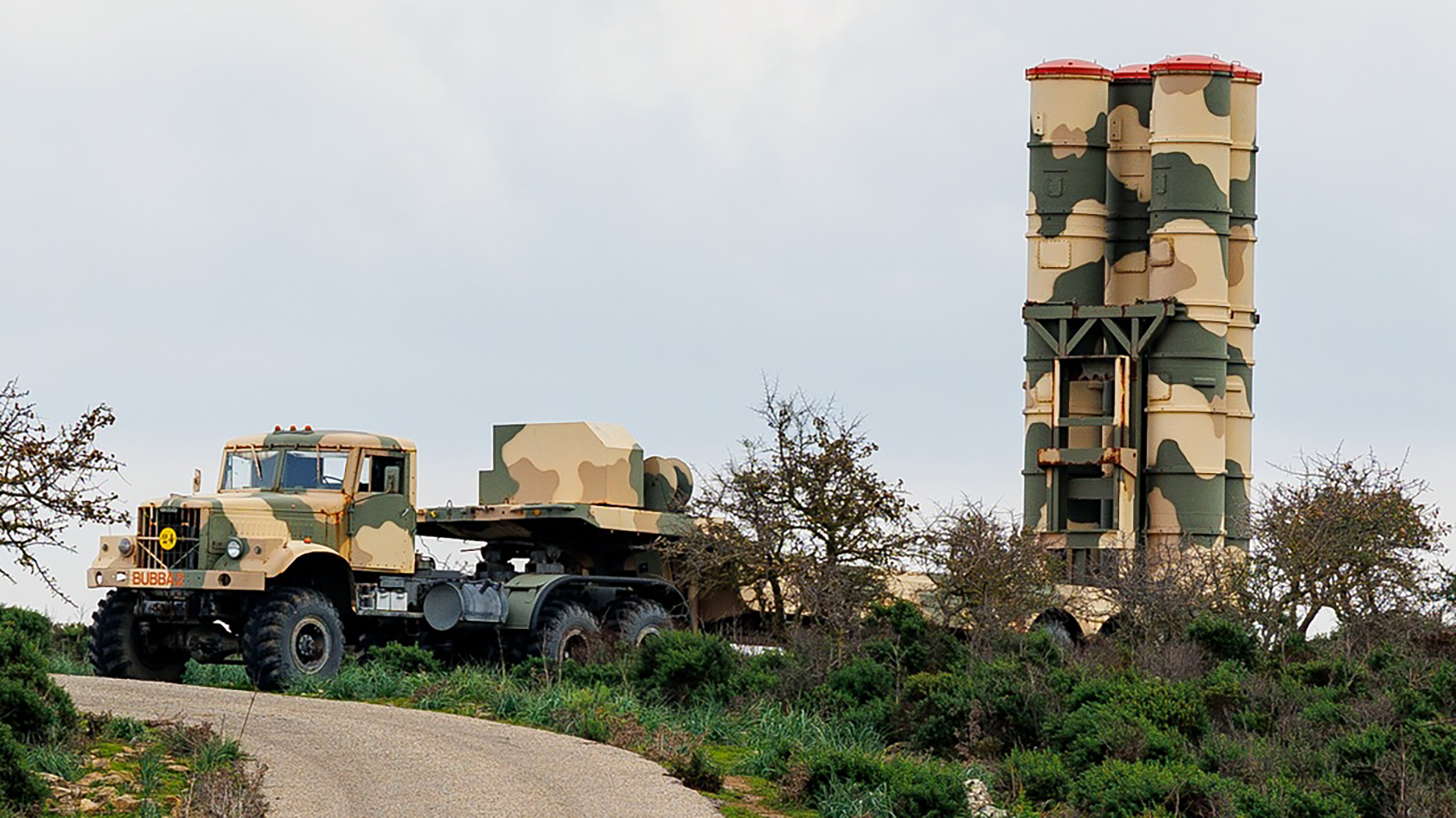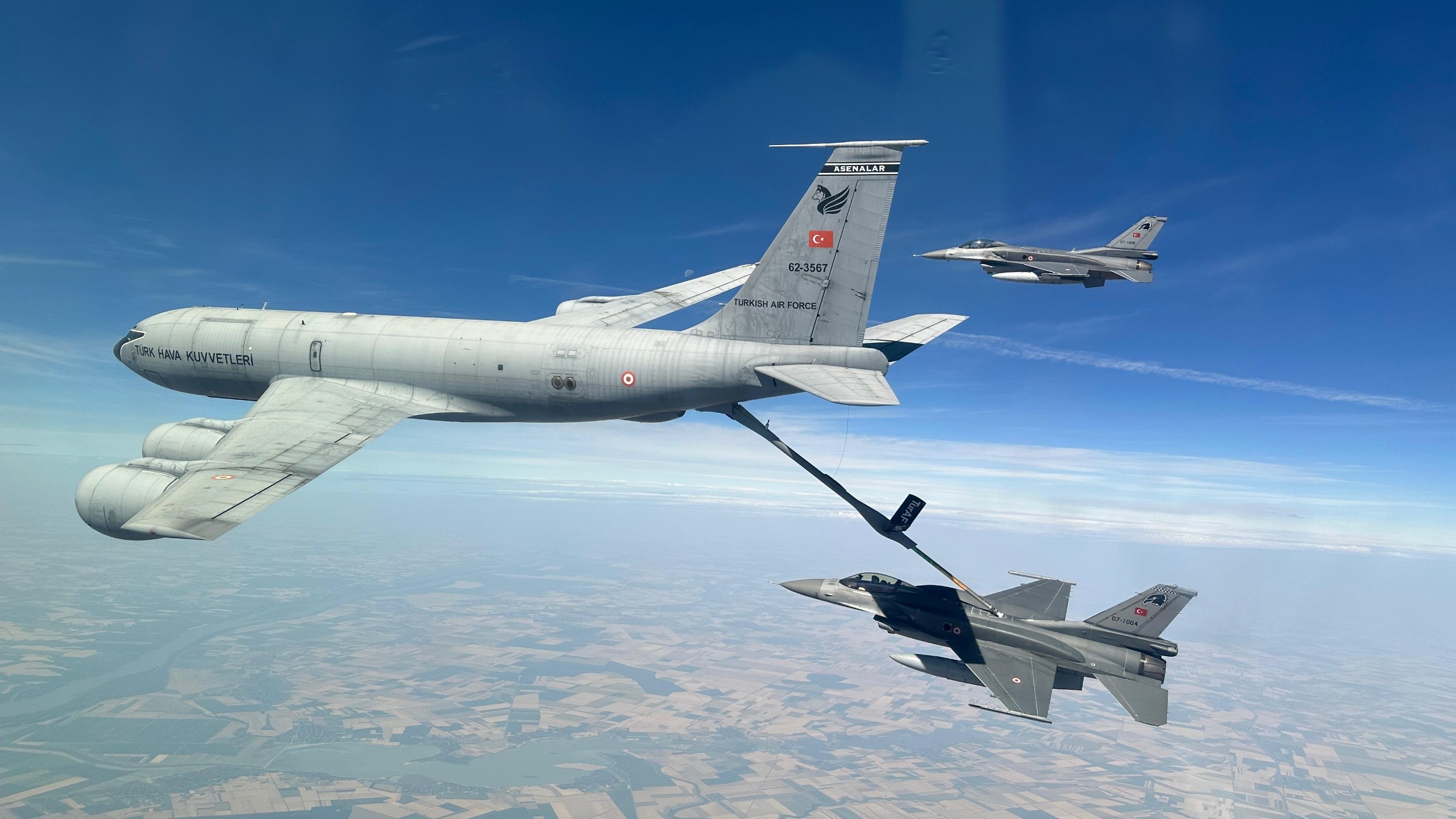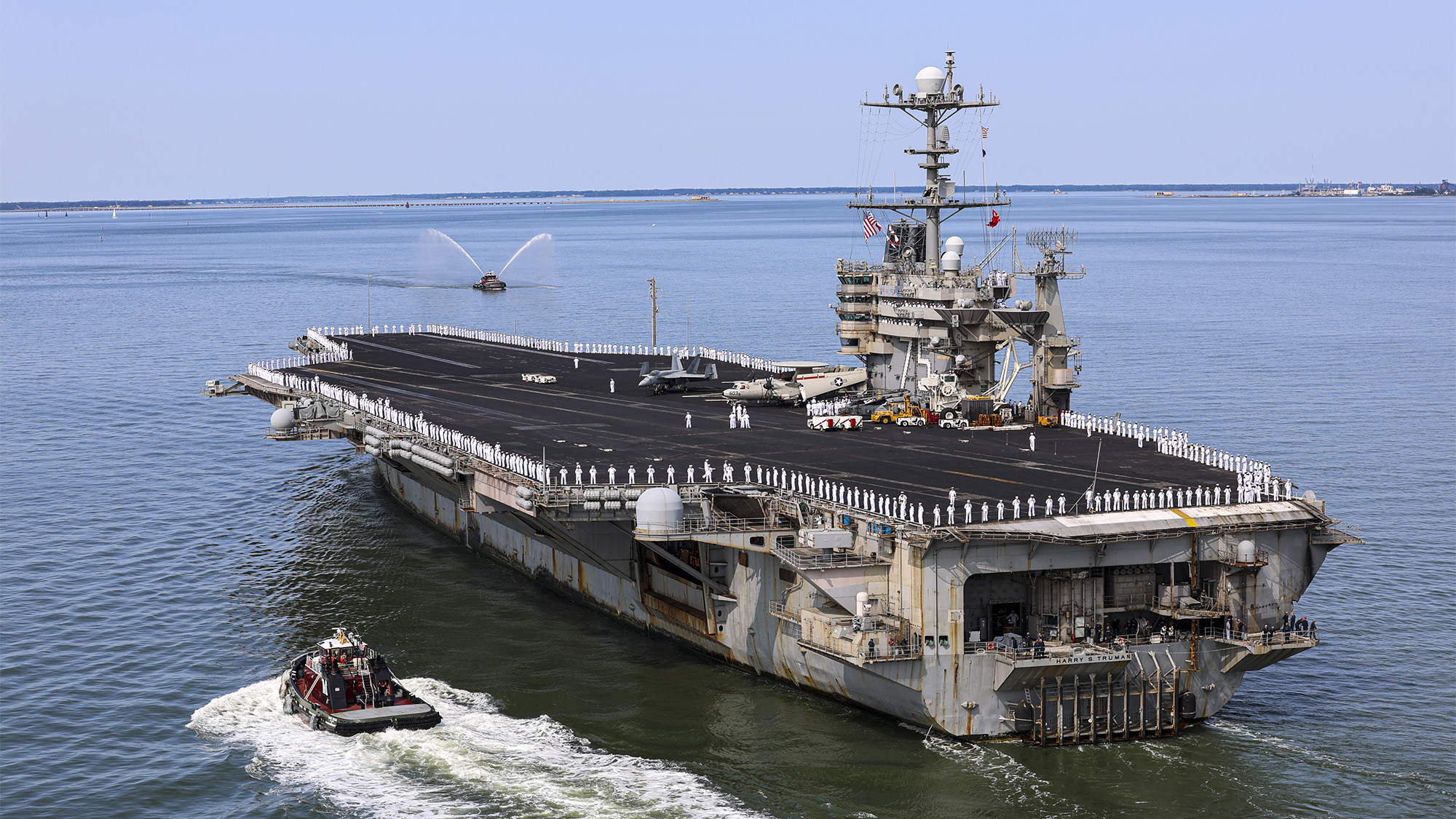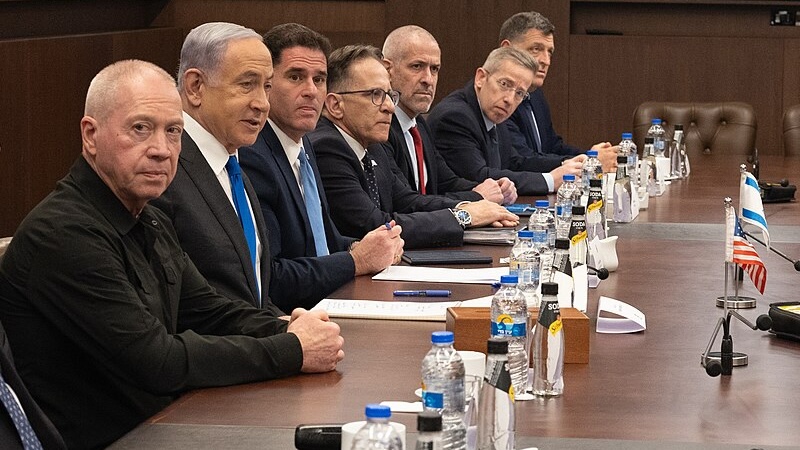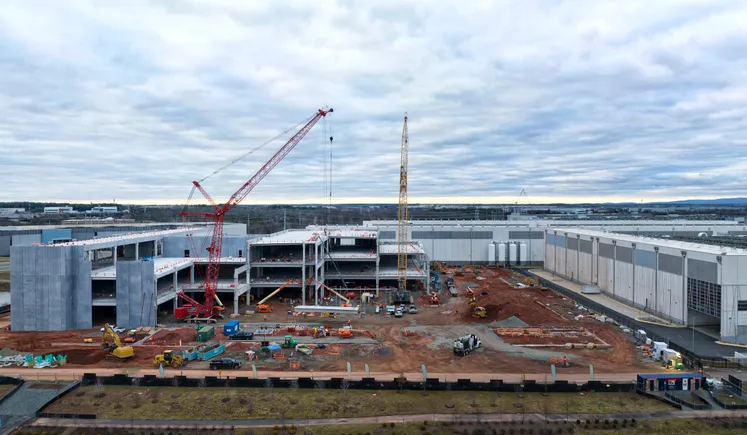Confusion, concern about Air Guard plans follow Trump’s Selfridge shift
“I can say to you right now that there is likely a downstream impact to some other Air National Guard units,” an Air Force official said after President Donald Trump upended plans for what planes would go to Selfridge ANGB in Michigan.


U.S. President Donald Trump arrives for a visit with Michigan Air National Guard troops on April 29, 2025 at Selfridge Air National Guard Base, Michigan. (Scott Olson/Getty Images)
WASHINGTON — In late April President Donald Trump stood before members of the Michigan National Guard and proclaimed that he would replace the A-10 Warthogs currently operated by Selfridge Air National Guard Base’s 107th Fighter Squadron with new Boeing-made F-15EXs set to begin arriving in fiscal 2028.
“In recent years, many in Michigan have feared for the future of the base,” Trump said. “They’ve been calling everybody, but the only one that mattered was Trump. They called Trump, and we got it done.”
While such announcements typically follow months of evaluation by the Air Force and campaigning from lawmakers, Trump’s move upended the service’s plans, which had called for KC-46 tankers to replace Selfridge’s KC-135s and A-10s and would have left the base without a fighter aircraft role going forward.
Getting the F-15EX was a major political victory for Michigan politicians who had long championed sending modern fighters to Selfridge ANGB, chief among them Democrat Gov. Gretchen Whitmer.
But it also confounded lawmakers on the Hill who represent other military installations that were already in line for new F-15s and who have publicly demanded answers from Air Force officials about what the plan is going forward. Those officials, in turn, have had little to provide.
“I think everyone thought that Selfridge was going to be fine with the aircraft they were getting, and now they’re getting this additional mission,” one House aide told Breaking Defense on the condition of anonymity. “And no one’s mad about it, but now it’s, like, a scramble to figure out what that’s going to look like.”
Another Congressional source raised a bigger question about whether this sets a precedent for the president to unilaterally change basing decisions, regardless of existing service plans — often laid out years in advance — for where equipment is set to go.
“The primary concern is that if that decision is allowed to hold, what are the limits on the Commander in Chief’s authority to reassign assets without adhering whatsoever to the strategic basing plan?” they said.
Carefully Crafted Plans
Beddown plans for equipment are developed over years, with many factors, both strategic and political, coming into play. The influence of every member of Congress who wants to defend their turf is weighed heavily, and the issue is particularly true when it involves the Guard, where the powerful adjutant generals for each state report to the governor and not the president, giving them a level of autonomy to fight back on decisions.
There have been repeated flareups between the active and Guard components for each service about equipment, with a notable blowout in 2013 and 2014 between the Air Force and Guard over the equipment the active component was sending to the Guard. That fight, which resulted in a Congressionally mandated commission, eventually ended with the two sides in a better, more communicative place.
Trump’s decision ultimately puts more fighter jets in the hands of Guardsmen, in what retired Maj. Gen Francis McGinn, the president of the National Guard Association of the United States, called a “big win for […] the entire Air National Guard” in a statement following the decision.
“But we have other fighter units with aging aircraft that need to be replaced,” he added.
In a series of hearings over the last month, Air Force officials have been up front that they are scrambling just as much as lawmakers to understand the second order effects, while noting clearly that this was a presidential decision, not something based in an existing plan.
Gary Ashworth, then the Air Force’s acting secretary, said during a May 6 House Appropriations Committee hearing that “the president … made the decision to buy additional F-15EXs” and base them at Selfridge.
During a separate May 6 congressional hearing, Lt. Gen. Adrian Spain, the Air Force’s deputy chief of staff for operations, characterized it as a “presidential action and order” that was “outside of the Department of the Air Force’s strategic basing plan.”
Spain later noted that the Air Force was still waiting to see the details of the president’s order, which would help determine any changes in costs or F-15EX beddown timelines for other units.
“But for now, we don’t really know the exact impacts while we’re waiting on the specific language,” he said.
Requests for comment to White House, US Air Force and National Guard were not returned by publication.
California Lawmakers Raise Concerns
The politics of fighter jets have been heavily on display in the month since Trump’s announcement, with members using a series of hearings to ask specifically about their units.
Lawmakers who represent states not slated to receive F-15EXs, including Reps. Marcy Kaptur, D-Ohio, and Don Davis, D-N.C., have also raised questions about the decision during hearings over the last several weeks.
Perhaps the most out-front comments have come from the California delegation, where the 144th Fighter Wing in Fresno had been slated to receive the F-15EX in the fiscal 2026-2027 timeframe, according to a Air Force report on recapitalization of the Guard fleet sent to Congress in April.
Rep. David Valadao, R-Calif., used the May 6 appropriations hearing to raise “urgent concerns” about the impact the Selfridge beddown could have on the unit.
Ashworth acknowledged to lawmakers at the time that certain Guard squadrons could be affected, including the unit in Fresno, but indicated that they would get their F-15EXs eventually.
“Our next step in that process is to do the detailed planning on the implementation,” Ashworth said. “We will do a detailed flow out of where we’re going to put F-15EXs after they’re coming off the production line.
“I can say to you right now that there is likely a downstream impact to some other Air National Guard units, including Fresno,” he said. “But as we go through that process, I commit to you to say that … we’re going to first of all, reduce to the minimum amount of time that we possibly can what that delay in getting the EXs to Fresno would be, and then mitigate that as well, as we try to make sure that we have the best F-15Cs and Ds to continue that mission.”
The issue popped up again during a May 20 House Appropriations defense subcommittee hearing, when Rep. Pete Aguilar, D-Calif, told officials he was “concerned about recent announcements that appear to direct some of the F-15EX aircraft to Selfridge over Fresno and New Orleans,” and asked what could be done to mitigate any delivery delays.
California Rep. Ken Calvert, the chairman of the subcommittee and one of the most important defense lawmakers in Congress, echoed Aguilar’s concerns, noting that “we haven’t had a really good briefing on that.”
The Louisiana Air National Guard’s 159th Fighter Wing in New Orleans, was also set to replace its F-15C/Ds with the F-15EX model in the FY26-27 timeframe. While they have yet to be particularly vocal over concerns, the state’s delegation boasts two extremely powerful congressional leaders in House Speaker Mike Johnson and House Majority Leader Steve Scalise.

Boeing’s F-15EX features fly by wire flight controls and new electronic warfare equipment (Boeing)
National Guard Chief Gen. Steven Nordhaus said during that hearing that he is working closely with the Air National Guard, Air Force and reserve component to nail down what the F-15EX beddown plan looks like, but provided few specifics on how the Selfridge decision would impact specific units slated to get the F-15EX.
“As we look to the F-15EX and the C model transition there, they’re working that very closely, so there’s no gaps or seams, and they’re trying to mitigate any impacts,” Nordhaus said.
Aguilar followed up by asking if Nordhaus had any concerns about whether the longer training times for A-10 squadrons like Selfridge to transition to the F-15EX could cause manpower issues.
“Are you passing any concerns up the chain? I mean, I hear what you’re saying, but clearly with the change in Selfridge, this could be a problem,” he said.
Nordhaus responded that individual Guard bases are communicating directly with the Air National Guard Readiness Center, which pushes information up to the director of the Air National Guard.
One key consideration that could influence exactly when units get their new F-15s is Boeing’s ability to increase production of the EX model. The aerospace giant hopes to ramp to two F-15EX jets a month by the end of 2026, according to Flight Global.
Nordhaus indicated he is watching F-15EX production closely.
“We want to understand what that looks like in the future, and then we’ll take that into consideration and minimize any gaps or seams so that we keep war fighters flying healthy aircraft to get after deterring our adversaries,” Nordhaus said during the hearing.
The House aide expressed similar sentiments. “We’ve just added another mouth to feed into the mix, and there’s only so much that Boeing can produce at a given time,” the aide said, adding that they had sought information from Boeing about options for speeding up production.































































